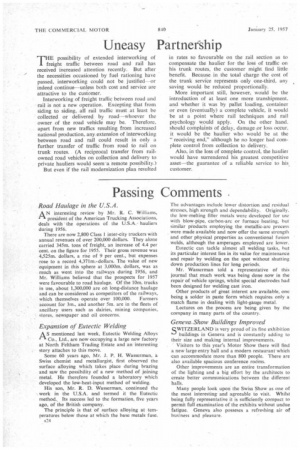Uneasy Partnership
Page 26

If you've noticed an error in this article please click here to report it so we can fix it.
TiE possibility of extended interworking of fireight traffic between road and rail has received increased attention recently. But after the necessities occasioned by fuel rationing have passed. interworking could not be justified—or indeed continue—unless both cost and service are attractive to the customer.
Interworking of freight traffic between road and rail is not a new operation. Excepting that from siding to siding, all rail traffic must at least be collected or delivered by road—whoever the owner of the road vehicle may be. Therefore. apart from new traffics resulting from increased national production, any extension of interworking between road and rail could result in only a further transfer of traffic from road to rail on trunk routes. (A reciprocal transfer from railowned road vehicles on collection and delivery to private hauliers would seem-a remote possibility.) But even if the rail modernization plan resulted in rates so favourable on the rail section as to compensate the haulier for the loss of traffic on his trunk routes, the customer might find little benefit. Because in the total charge the cost of the trunk service represents only one-third, any saving would be reduced proportionally.
More important still, however, would be the introduction of at least one more transhipment. and whether it was by pallet loading, container or even (eventually) a complete vehicle, it would be at a point where rail techniques and rail psychology would apply. On the other hand, should complaints of delay, damage or loss occur. it would be the haulier who would be at the "receiving end," although he no longer had complete control from collection to delivery.
Also, in the loss of complete control, the haulier would have surrendered his greatest competitive asset—the guarantee of a reliable service to his customer.




























































































